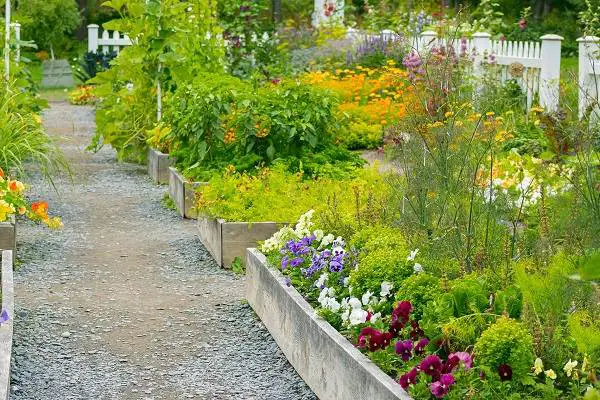If you’re an avid gardener, then you probably know that planning a summer crop garden takes more than just digging up the soil and planting some seeds.
A successful garden requires planning and organization, as well as a little bit of knowledge about the plants you’re planning to grow.
In this article, we’ll guide you through the process of planning your summer crop garden step by step, from choosing the right location to deciding what to plant.
Choosing the Right Location for Your Garden

The first step in planning your summer crop garden is to choose the right location for it. A successful garden needs at least six hours of sunlight per day, so choose a spot that receives plenty of direct sunlight.
You’ll also want to choose a location that has good soil drainage, as standing water can cause your plants to rot.
Preparing Your Soil for Planting
Once you’ve chosen the right location for your garden, it’s time to prepare your soil for planting. Start by removing any weeds or debris from the area, and then loosen the soil with a garden fork or tiller.
You can also add organic matter to your soil to improve its texture and nutrient content.
Deciding What to Plant in Your Garden
Now that your soil is ready for planting, it’s time to decide what to plant in your garden. When choosing vegetables, select those that thrive in warm weather, such as tomatoes, peppers, and cucumbers.
You should also plan for succession planting, which involves planting crops in stages to ensure a continuous harvest throughout the summer. Additionally, consider companion planting, which involves planting different crops together that benefit each other.
Starting Seeds Indoors
If you’re planning to grow your crops from seed, you’ll need to start them indoors several weeks before the last frost date in your area. Use seed starting mix and follow the instructions on the seed packet to ensure successful germination.
Transplanting Seedlings into Your Garden
Once your seedlings have grown large enough, it’s time to transplant them into your garden. Before planting, make sure to harden off your seedlings by gradually exposing them to outdoor conditions. Then, plant them in your prepared soil at the appropriate depth.
Watering and Fertilizing Your Plants
To ensure healthy growth, your plants will need regular watering and fertilizing. Water your plants deeply once or twice a week, depending on the weather and soil conditions. Use a balanced fertilizer to provide your plants with the necessary nutrients.
Managing Pests and Diseases
Pests and diseases can be a major threat to your summer crop garden. Use organic pest control methods, such as companion planting and beneficial insects, to keep pests at bay. Additionally, inspect your plants regularly for signs of disease and treat them promptly.
Harvesting Your Crops
Once your plants have matured, it’s time to harvest your crops. Different vegetables will have different indicators of ripeness, so be sure to research the specific crops you’re growing. Generally, you’ll want to harvest your vegetables when they are fully mature and before they become overripe.
Preserving and Storing Your Produce
If you’ve had a successful harvest, you may have more produce than you can use right away. There are several methods for preserving and storing your produce, such as canning, freezing, and dehydrating. Choose the method that works best for the type of product you have.
Read Also: Best Summer Crops: How To Most Out of Your Garden
Maintaining Your Garden Throughout the Summer
Throughout the summer, you’ll need to continue to maintain your garden. This includes weeding, pruning, and monitoring for pests and diseases. Regular maintenance will ensure that your plants continue to thrive and produce throughout the season.
Troubleshooting Common Problems
Even with the best planning and care, problems can still arise in your summer crop garden. Common issues include pest infestations, nutrient deficiencies, and weather-related problems. If you encounter any problems, research the issue and take steps to address it as soon as possible.
Tips for a Successful Summer Crop Garden
Here are a few additional tips to help ensure a successful summer crop garden:
- Use mulch to help retain moisture and suppress weeds
- Rotate your crops each year to prevent soil-borne diseases
- Consider using raised beds to improve soil drainage
- Plant flowers and herbs throughout your garden to attract beneficial insects
Conclusion
Planning a successful summer crop garden takes time and effort, but the rewards are well worth it. By choosing the right location, preparing your soil, and selecting the right plants, you can enjoy a bountiful harvest throughout the summer months.









